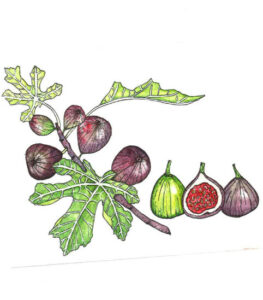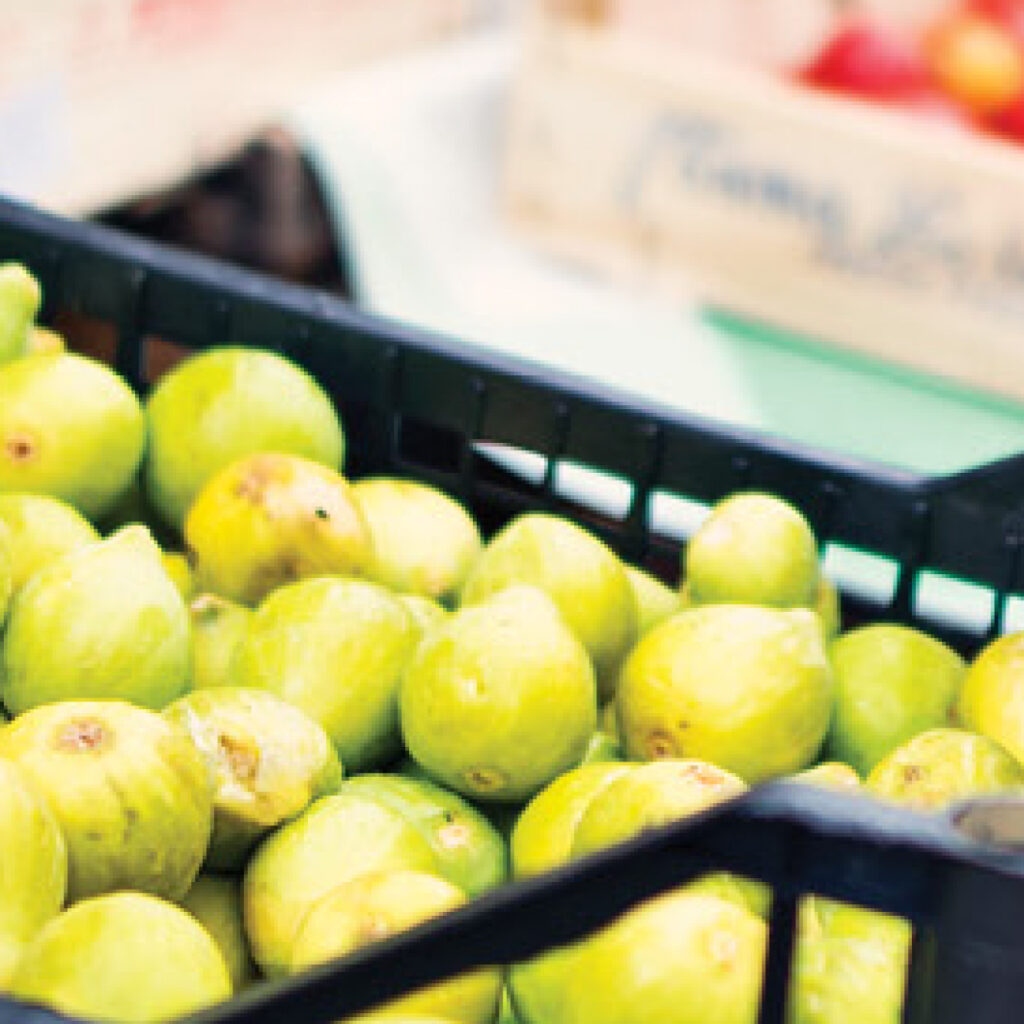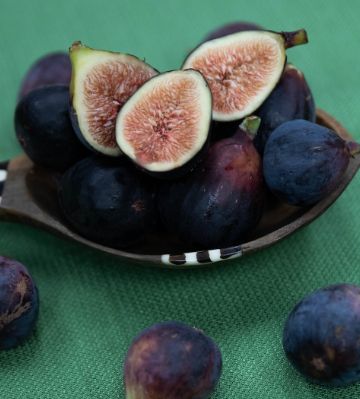Fig, Figure (French), higo (Spanish), 无花果 (wú huā guǒ Mandarin), अंजीर (anjeer, Hindi), ફિગ (phiga, Gujarati), Matunda ya Mtini (Swahili), تین (teen, Arabic)
Ficus sp.

The fruit of the fig tree has been a significant source of food in the Middle East and Mediterranean region since prehistoric times. Archaeological evidence suggests it is among the first plants cultivated more than 10,000 years ago. It was prized by the ancient Greeks and Romans, and the fig is mentioned numerous times in both Hebrew and Christian religious texts. Fig cultivation spread throughout Europe with the R oman Empire, and it remained an important food source during the medieval period. Spanish missionaries introduced figs to California in the 18th century, and they were popularized in the ‘Fig Newton’ cookie a century later. Fig trees are grown throughout Florida gardens and edible landscapes today because they do well in poor soil and tolerate hot climate and seasonal drought.

Archaeological evidence suggests that the fig was among the first plants cultivated by humans. The fossilized remains of nine sterile-type figs was found in a Neolithic village in the Jordan Valley dating more than 10,000 years ago. Presence of the sterile type suggests that it was intentionally planted making it the first known evidence of agriculture. Figs were widespread throughout the Middle East, and they were a common food in Classical Greece and Rome. The ancient Turkish historical Herodotus highlighted the significant cultural role of figs in society in the 5th century BC, and Aristotle documented fig cultivation and anatomy in the 4th century BC. Fig cultivation spread as the Roman empire expanded throughout Europe, and cultivation continued during the medieval period. Spanish missionaries introduced figs to California in the mid-eighteenth century, and the ‘Mission’ fig remains among the most popular varieties today. Fig trees are popular in home gardens and edible landscapes throughout Florida because they tolerate well-drained poor soil and seasonal drought.
Figs have been an important food source in the Middle East and Mediterranean region since prehistoric times. They are mentioned numerous times in both the Hebrew Tanakh and in all four Christian Gospels. In the Book of Genesis, for example, Adam and Eve cover themselves in fig leaves, and in Deuteronomy the Promised Land is described as “a land of wheat and barley, of vines and fig trees…’ In the Gospels the fig tree is often represented as a symbol of Israel and most notably as a barren fig tree cursed by Jesus. Fig Cakes were a common food in Palestine during the biblical period, and they have been eaten both fresh and dried for millennia. Today they are also processed into jam, such as Lebanese fig jam, rolls, biscuits and other types of desserts such as Italian fig cookies called cuccidati. Greek figs in syrup are called glyko sykalaki and Spanish fig cake is called pan de higo. In the United States figs were initially popularized by the ‘Fig Newton’ cookie in 1891, and today they are also added to charcuterie boards, eaten raw or dried, wrapped in prosciutto or ham, cut fresh into yogurt with honey, or made into preserves.

Figs are rich in fiber, vitamins A and B6, calcium, potassium, iron, phosphorus, and copper.


Although there are many varieties of figs, those recommended for Florida are common types, such as Brown Turkey, that do not require pollination to produce fruit. Trees can be planted in spring and fall via cuttings and transplants. Harvest fruits in the summer months: June through August.
To plan, a heritage garden, download the ‘Planning a Florida Heritage Garden (PDF).’

Santa Fe College Partnered with Multiple Organizations in a Collaborative Effort to Bring Awareness of the Heritage Plants In Florida.
BY CULTURAL HISTORY
BY GROWING SEASON
DROUGHT TOLERANT PLANTS
Commitment to Equal Access and Equal Opportunity
Santa Fe College is committed to an environment that embraces diversity, respects the rights of all individuals, is open and accessible, and is free of harassment and discrimination. For more information, visit sfcollege.edu/eaeo or contact equity.officer@sfcollege.edu.
SACSCOC Accreditation Statement
Santa Fe College is accredited by the Southern Association of Colleges and Schools Commission on Colleges (SACSCOC). For more information, visit sfcollege.edu/sacscoc.
